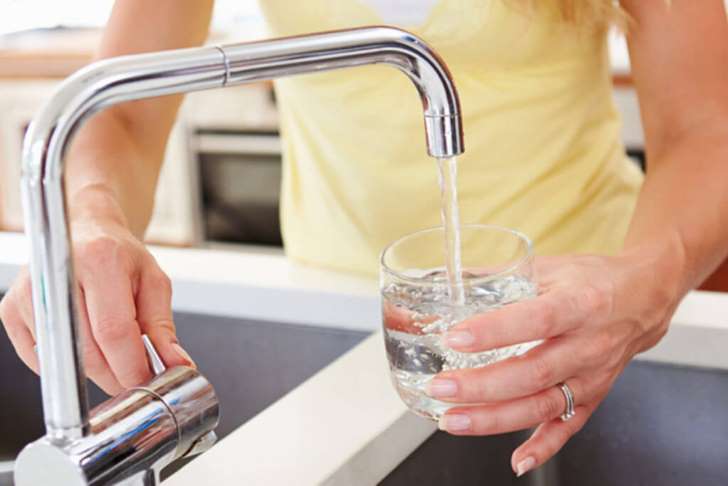News of pharmaceuticals and contaminants in your water may have you wondering what’s hitching a ride when you turn on the tap. Luckily for us, America’s drinking water is among the best in the world, but that doesn’t mean we’re in the clear. While the U.S. Environmental Protection Agency regulates 90 percent of the water Americans consume, where your water comes from—utility company, private well or plastic bottles—affects whether it’s regulated or not and what kinds of contamination to be concerned about. Drinking water is always a smart idea. A cup of plain hot water has some surprising health benefits.
Municipally Supplied
Water from utilities is among the most closely regulated. “The EPA mandates that each public water supplier test for certain levels of contaminants,” according to drinking water expert Mark LeChevallier of American Water, one of the country’s largest water and wastewater utility companies. The EPA sets maximum contaminant levels well below those known to harm humans.
What to consider: Environmentalists like Leeann Brown from the Environmental Working Group believe there’s room for improvement. “Of the 316 contaminants the EWG 2009 tap water study found in the nation’s water supply, 202 were unregulated, and thus allowed to be present at any level in our water.” Public water operators are required to report water quality to consumers every spring. Take the time to review the notification from your supplier.
Private Well
If your water comes from a private well, you’re responsible for all monitoring and testing of the water. “Private wells are seen as personal property and are not covered by the EPA,” says LeChevallier. Shallow or poorly constructed wells, especially those near farms and industrial areas, are more vulnerable to contamination from surface water, including pesticides and sewage.
What to consider: Have your well water tested once or twice a year. It can be professionally tested by an independent lab or by using a DIY testing kit from a hardware store. Check for coliform bacteria, nitrates, total dissolved solids and pH levels. Then compare your well’s results to federal and state drinking water standards, which are listed at epa.gov.
Bottled
Bottled water is governed by the Food and Drug Administration, not the EPA. “The EPA is more stringent with testing, but bottled water almost meets the same standards,” explains LeChevallier. However, there have been health outbreaks due to bottled water and the U.S. Centers for Disease Control are starting to track those outbreaks. LeChevallier adds: “Most water is bottled reputably, but it’s not necessarily safer than tap water.”
What to consider: “Bottled water is 1,000 times more expensive than tap water,” says LeChevallier. So, it’s a personal choice whether or not you feel like you’re getting 1,000 times more value than tap water. He went on to say that, “The vast majority of plastic water bottles are not recycled,” so that’s another factor to think about. It’s great for hydrating on the run (find out which drinks are worst for hydrating), but so are reusable bottles filled with tap water.
Filters
The most commonly purchased purifiers are carbon-activated filters, which include those in water pitchers, bottles and faucet-mounted systems. They typically reduce chlorine, lead, copper and some pesticides and improve taste and smell. “When used properly, carbon filters like Brita and Pur help improve the quality of most tap water, “says Brown.
What to consider: It’s critical to change the filters regularly and lots of people don’t. “The filter absorbs trace levels of materials in the water, and if it’s not changed as directed, those materials start leaching into the water, meaning there’s even more of that material getting into the water than was originally present,” warns LeChevallier.
Clearly, drinking water in the U.S. is not without problems. But for the most part, our water quality has set the standard that other countries are trying to reach. Brown encourages people to be proactive: “To ensure you’re drinking the cleanest water, keep an eye on your utility’s annual water quality report and the other resources they offer.” If you use a filter, change it as directed. And, by all means, drink more; the health benefits from drinking water far outweigh any risk.












